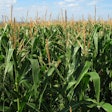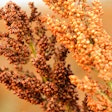
A recent study has led to an update in the berry processing score (BPS) metric for sorghum silage, potentially improving its use in dairy rations. The research, conducted by scientists from Texas A&M University, University of Wisconsin-Madison and Rock River Laboratory, Inc., has revised the standardized measurement from a 1.7 mm sieve to a 2.36 mm sieve screen.
Katie Raver, animal nutrition and field support specialist at Rock River Laboratory, emphasized the significance of this change. "Expanding the sieve to 2.36 mm size gives a good barometer that the berry is cracked and opens the door for further fermentation," Raver said.
The update aims to more accurately account for the relationship between starch digestibility after processing and ensiling sorghum. This improvement could lead to better harvest management and increased sorghum silage digestibility in dairy animals, similar to the impact of kernel processing score (KPS) on corn silage.
Initial results from the study show promise. "Roughly 66 percent of the starch in sorghum silage that has fermented for three months is digestible after seven hours in the rumen," Raver reported.
The research team recommends a BPS above 50 percent with the 2.36 mm screen as the new benchmark for growers and harvesters. This standard could translate to an estimated return on investment of $8.00 per ton.
As water scarcity challenges persist in arid regions of the U.S., improved sorghum processing and scoring techniques could provide opportunities for dairy producers to replace corn silage with this water-conserving crop more efficiently.
The ongoing study aims to include an additional 100 samples to further assess the link between starch digestibility and processing. Current recommendations are based on over 300 commercial and research samples.

















